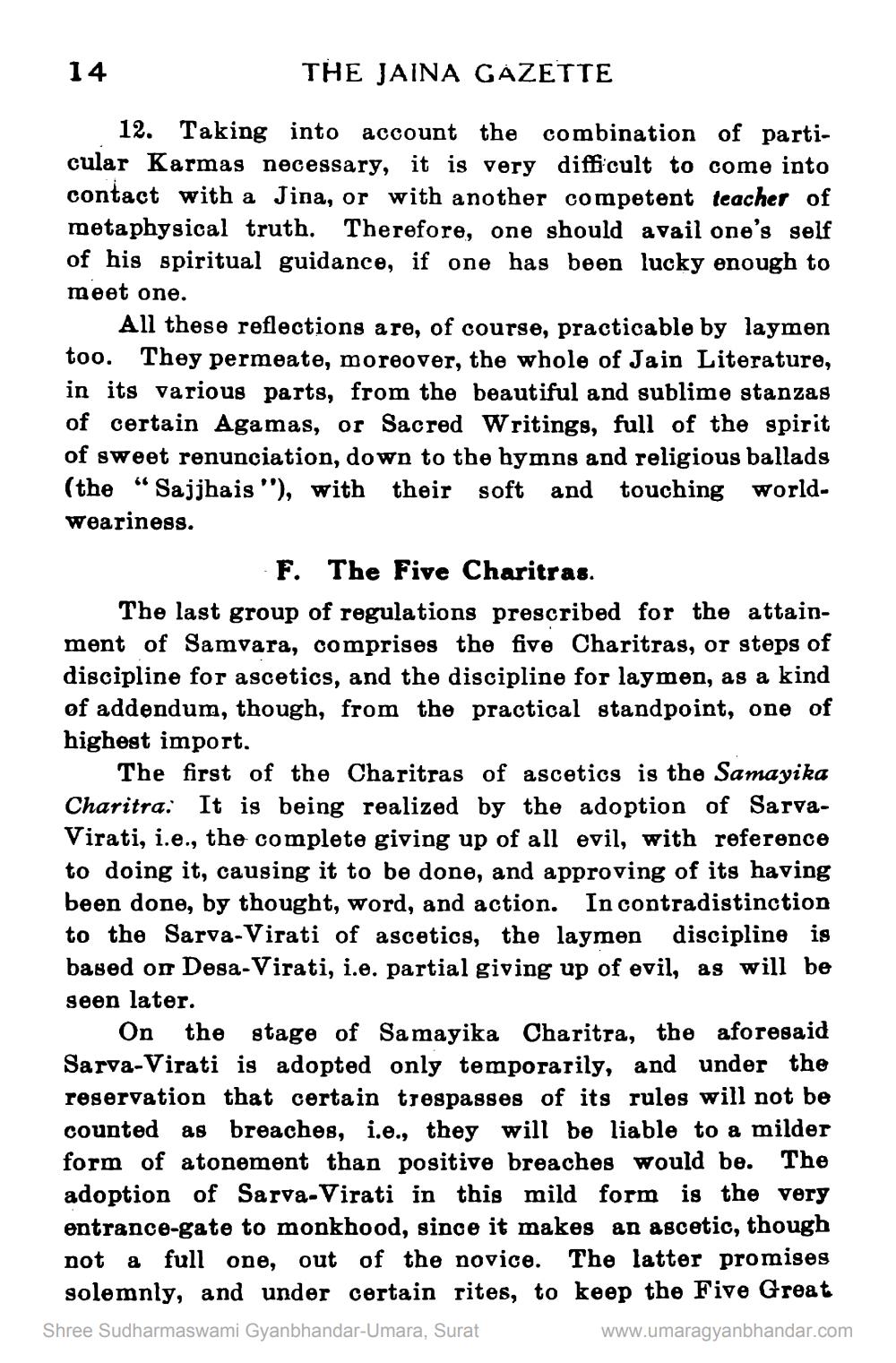________________
14
THE JAINA GAZETTE
12. Taking into account the combination of particular Karmas necessary, it is very difficult to come into contact with a Jina, or with another competent teacher of metaphysical truth. Therefore, one should avail one's self of his spiritual guidance, if one has been lucky enough to meet one.
All these reflections are, of course, practicable by laymen too. They permeate, moreover, the whole of Jain Literature, in its various parts, from the beautiful and sublime stanzas of certain Agamas, or Sacred Writings, full of the spirit of sweet renunciation, down to the hymns and religious ballads (the "Sajjhais "), with their soft and touching worldweariness.
F. The Five Charitras The last group of regulations prescribed for the attainment of Samvara, comprises the five Charitras, or steps of discipline for ascetics, and the discipline for laymen, as a kind of addendum, though, from the practical standpoint, o highest import.
The first of the Charitras of ascetics is the Samayika Charitra. It is being realized by the adoption of SarvaVirati, i.e., the complete giving up of all evil, with reference to doing it, causing it to be done, and approving of its having been done, by thought, word, and action. In contradistinction to the Sarva-Virati of ascetics, the laymen discipline is based on Desa-Virati, i.e. partial giving up of evil, as will be seen later.
On the stage of Samayika Charitra, the aforesaid Sarva-Virati is adopted only temporarily, and under the reservation that certain trespasses of its rules will not be counted as breaches, i.e., they will be liable to a milder form of atonement than positive breaches would be. The adoption of Sarva-Virati in this mild form is the very entrance-gate to monkhood, since it makes an ascetic, though not a full one, out of the novice. The latter promises
solemnly, and under certain rites, to keep the Five Great Shree Sudharmaswami Gyanbhandar-Umara, Surat
www.umaragyanbhandar.com




